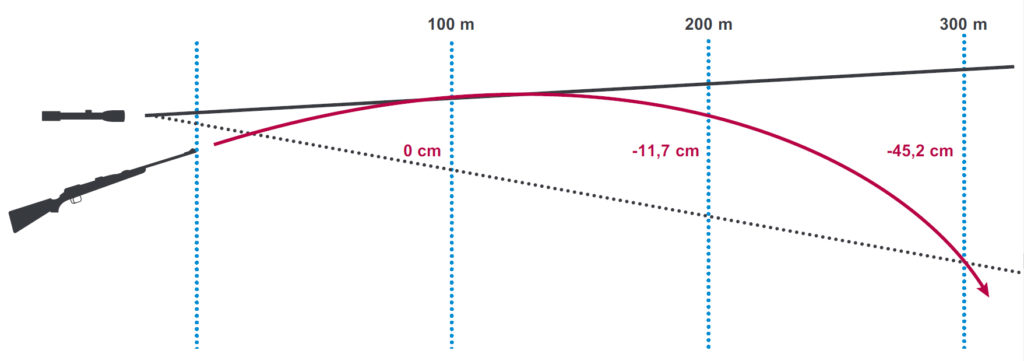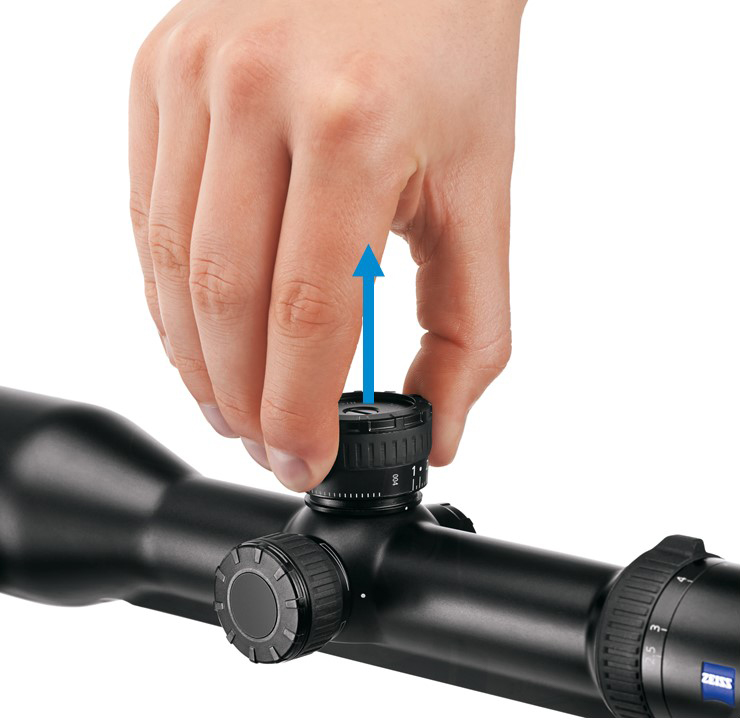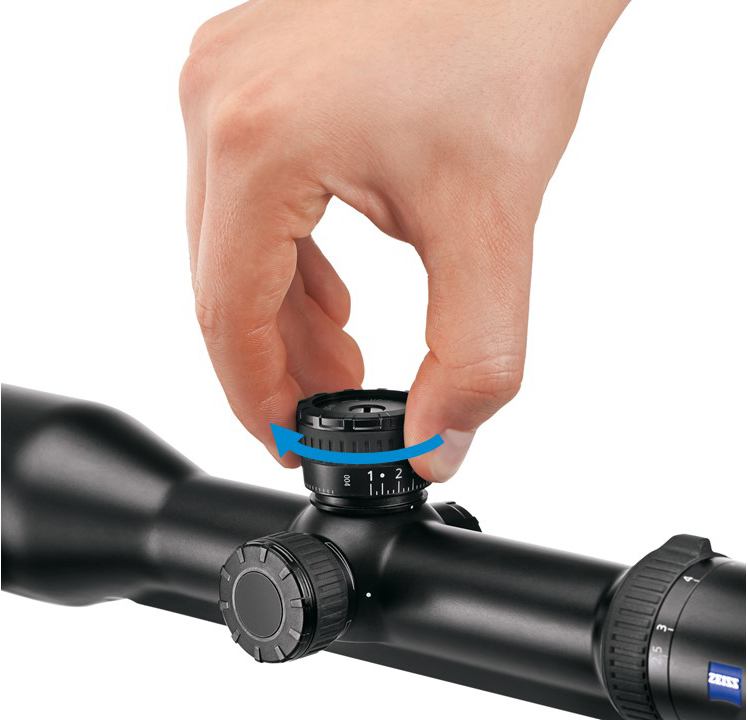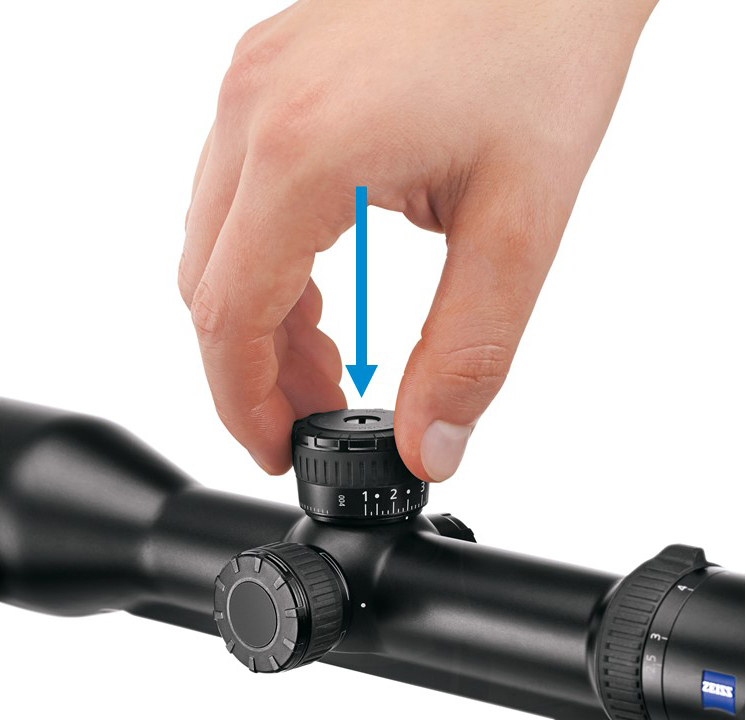The weapon is ranged after the riflescope is mounted. This means that the reticle and sighting line are adjusted to show the exact point of impact of a bullet at a certain distance (e.g. 100m or GEE). The riflescopes are equipped with elevation adjustment, i.e. two adjustment turrets on the center tube which are used to align the reticle in windage and elevation.
Centered reticles
On older riflescopes, this results in the reticle being positioned somewhere in the image field after ranging instead of in the center. Modern centered reticles avoid this by slightly tipping the entire inverting system so that the entire field of view moves. The reticle is always centered in the image.
Squared reticle adjustment
Most riflescopes include squared reticle adjustment, i.e. there is an equal amount of room for elevation and windage. Special models for longer distances offer an enlarged vertical adjustment range to better compensate bullet drop at long ranges – without compromises for lateral adjustment. On all ZEISS riflescopes it is always ensured that the lateral setting is not influenced when the height is adjusted and vice versa.
Adjustment Clicks
With each click of the adjustment knobs, the reticles on most “European” models move 1cm with a target 100m away, i.e. 1cm/ 100m. This is 3cm per click on a 300m disc.
“American” models usually include an adjustment of ¼ MoA = approx. 0.73cm/ 100m (MoA = minute of angle = 1/60 of a degree).
Zero
After ranging, the adjustment knobs on most riflescopes can be zeroed, i.e. the scale is set to the starting position (zero) without adjusting the reticle. When the reticle is changed again, e.g. to compensate for bullet drop or side wind, the correct position can be restored easily.
Correcting bullet drop with the bullet drop compensator (ASV)
In addition to the (one-time) zeroing, the reticle adjustment is used to compensate for bullet drop and remain on target at long range.
This requires that the bullet drop is known. The ballistic data supplied by the manufacturer provides this information which, ideally, you should test at different distances.
Example: The weapon is zeroed at 100m, the bullet drop is 12cm at 200m and 45cm at 300m. To remain on target at 200m, the reticle is adjusted 6 clicks (1 click = 2cm/ 200m), 15 clicks at 300m. The direction of rotation is the same as the correction of a low shot, i.e. lower sighting line to point of bullet impact.
Principle of the ASV
Instead of counting clicks, the bullet drop compensator developed by ZEISS offers an ingeniously simple and reliable solution: the easy-to-grip adjustment knob features a range scale so that the reticle simply has to be set to the estimated or measured range for long-distance shots enabling the hunter to remain on target.
Different range scales up to 400m are available as metal stickers to adjust the system to the different ballistic curves. The right scale for the ammunition mentioned above is designed so that a 2 appears (200m) after 6 clicks, a 3 (300m) after 15 clicks etc., each with an intermediate setting at 25m intervals. The larger the bullet drop is (slow or heavy bullets) the more spread out the scale.

ZEISS Hunting App / Ballistics Calculator
The easiest way to choose the right ammunition-dependent ASV scale is with the ZEISS Hunting App or the ZEISS online ballistics calculator.


